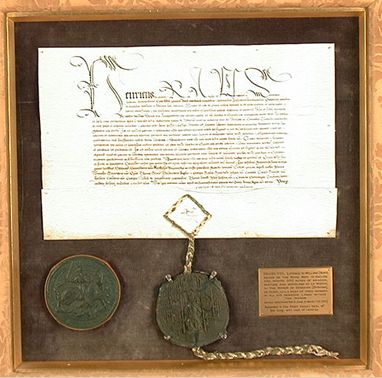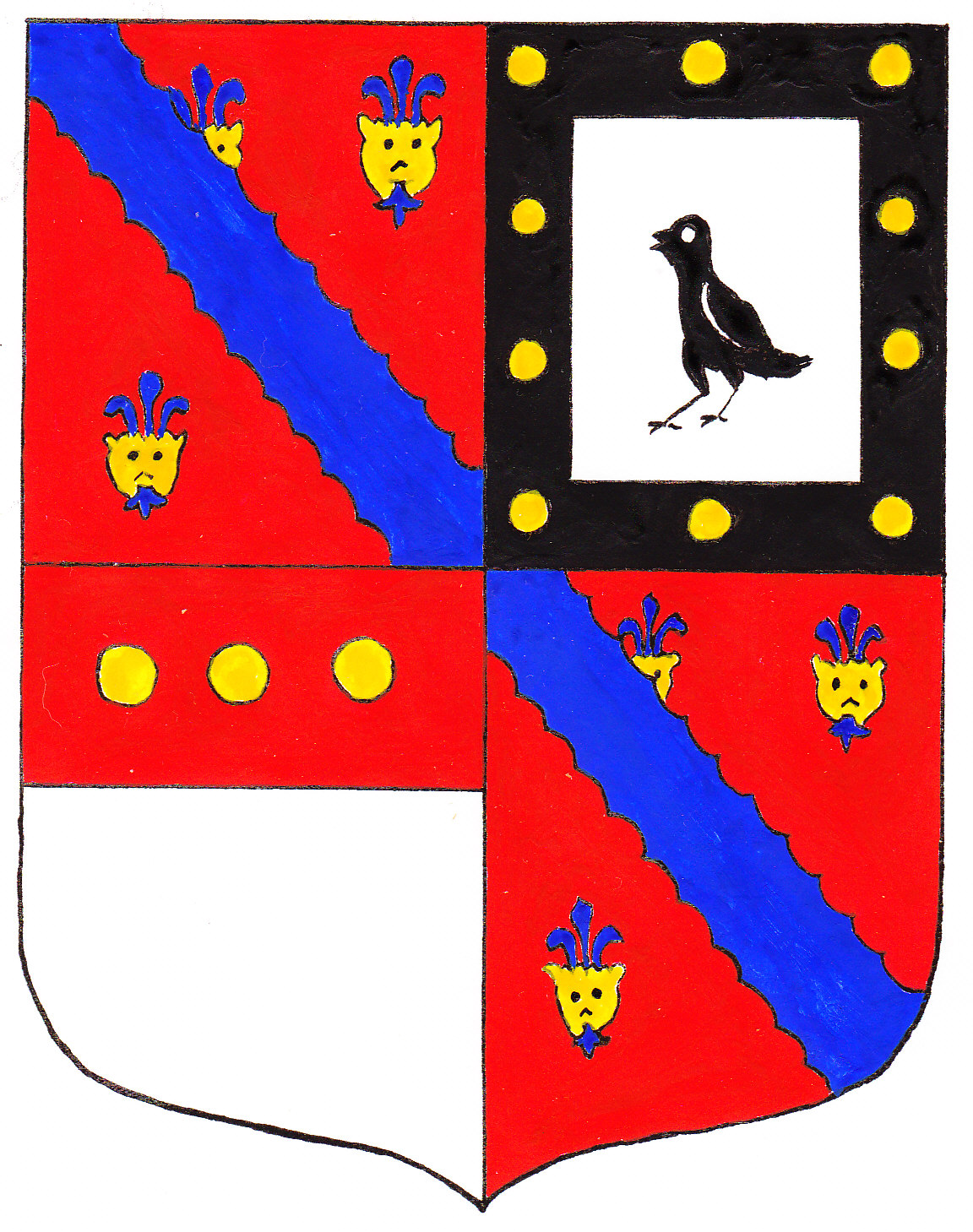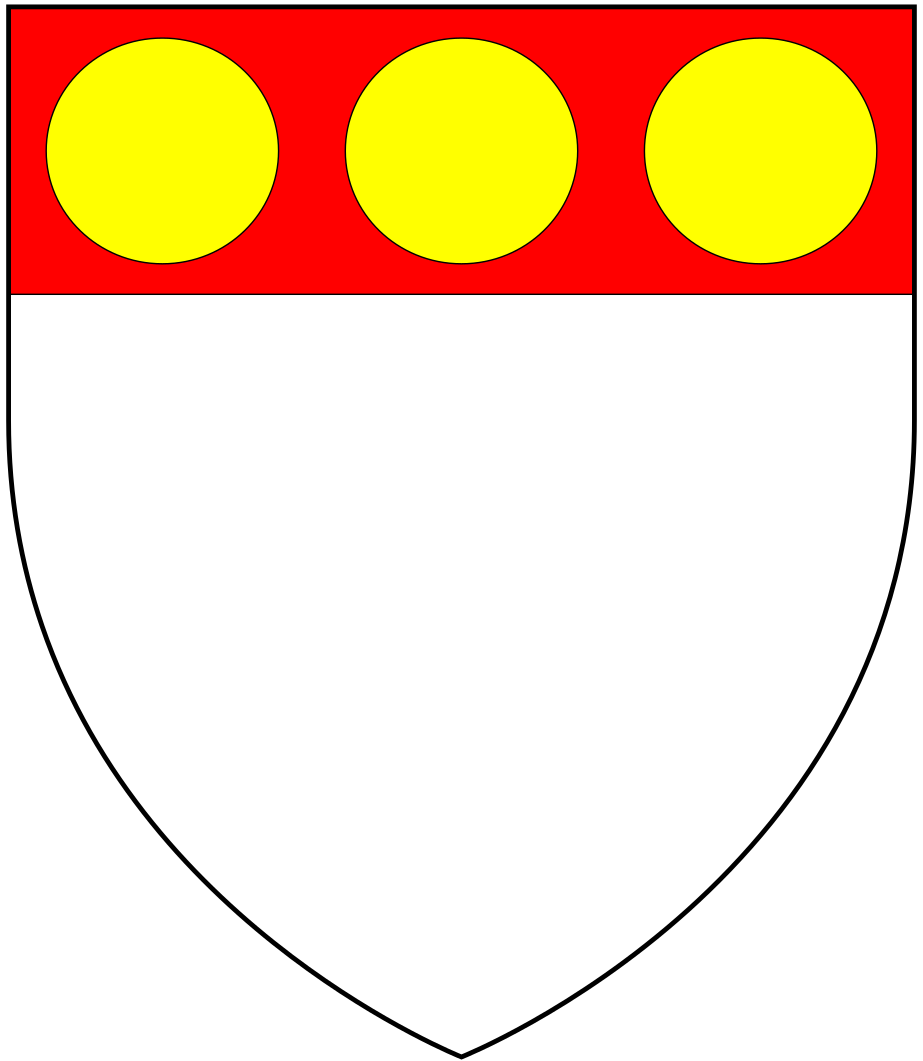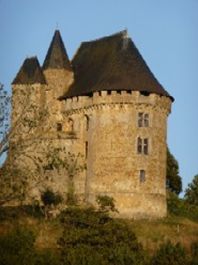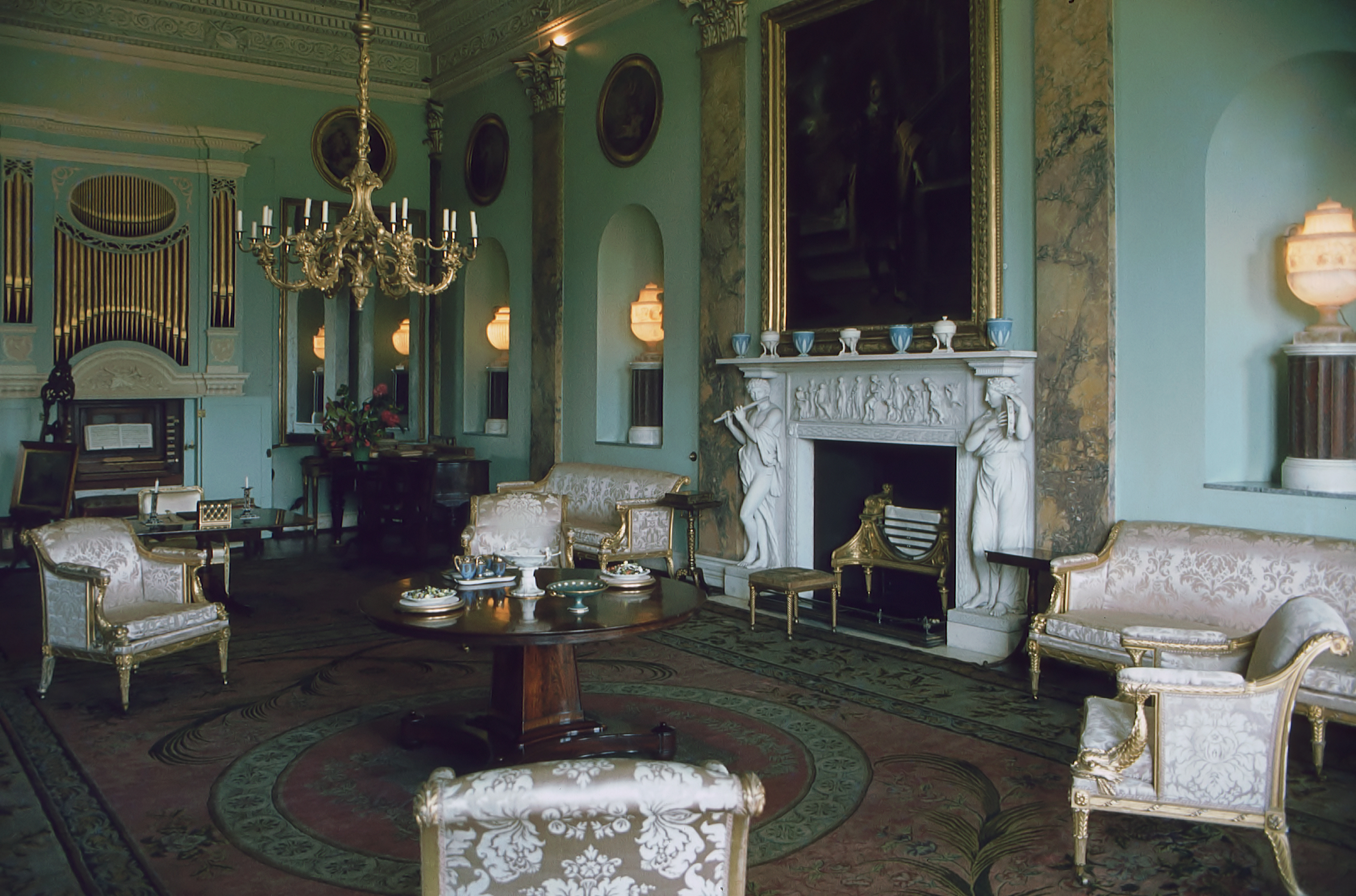|
Dyrham
Dyrham is a village and parish in South Gloucestershire, England. Location and communications Dyrham is at lat. 51° 29' north, long. 2° 22' west (). It lies at an altitude of 100 metres above sea level. It is near the A46 trunk road, about north of Bath and a little south of the M4 motorway. The Cotswold Way long-distance footpath runs through the village. Administration Dyrham is administered by the civil parish of Dyrham & Hinton and by the unitary authority of South Gloucestershire. The population of this parish was 296 at the 2011 census. History Dyrham is thought to have been the site of the important Battle of Deorham fought in AD 577 between the West Saxons under Ceawlin and Cuthwine, and the Britons of the West Country. The outcome of the battle was a decisive win for the West Saxons, allowing them to colonise three important cities, Glevum (Gloucester), Corinium (Cirencester) and Aquae Sulis ( Bath). The Domesday Book of 1086 records the tenant-in-chie ... [...More Info...] [...Related Items...] OR: [Wikipedia] [Google] [Baidu] |
Dyrham Park
Dyrham Park () is a baroque English country house in an ancient deer park near the village of Dyrham in South Gloucestershire, England. The house, attached orangery, stable block, and accompanying parish church are Grade I listed buildings, while the park is Grade II* listed on the National Register of Historic Parks and Gardens. The current house was built for William Blathwayt in stages during the 17th and early 18th centuries on the site of a previous manor house, with the final facade being designed by William Talman. It contains art works and furniture from around the world, particularly Holland, and includes a collection of Dutch Masters. The house is linked to the 13th-century church of St Peter, where many of the Blathwayt family are buried. The house is surrounded by of formal gardens, and parkland which used to support a herd of fallow deer. The grounds, which were originally laid out by George London and later developed by Charles Harcourt Masters, include water f ... [...More Info...] [...Related Items...] OR: [Wikipedia] [Google] [Baidu] |
William Denys
Sir William Denys (c. 1470–1533) of Dyrham, Gloucestershire, was a courtier of King Henry VIII and High Sheriff of Gloucestershire in 1518 and 1526. The surname is sometimes transcribed as Dennis. Origins He was the eldest son and heir of Sir Walter Denys (d. 1505) of Siston in Gloucestershire, by his 2nd wife Agnes Danvers, 2nd daughter & co-heiress of Sir Robert Danvers (died 1467) of Epwell, Oxfordshire, Chief Justice of the Common Pleas (1450–1467). The Inquisition ''post mortem'' of his father Sir Walter, dated 1505, states William his son and heir to have then been "aged 35 years and more", which suggests a date of birth of 1470. First marriage In about 1481 William's father arranged for him to marry Edith Twynyho, daughter of the wealthy Cirencester lawyer and cloth-merchant John Twynyho (1440–1485), whose monumental brass survives over his tomb in the south aisle of Lechlade Church, Glos. Twynyho served as MP for Bristol in 1472–1475 and again in 1484 and had b ... [...More Info...] [...Related Items...] OR: [Wikipedia] [Google] [Baidu] |
William Russell (knight)
Sir William Russell (1257–1311) was an English nobleman, knight, and holder of a ''moiety'' of the feudal barony of North Cadbury, Somerset, but spent most of his life engaged in the administration and defence of the Isle of Wight, where he obtained by marriage the manor of Yaverland. He served as constable of Carisbrooke Castle, and sat in parliament on two occasions, firstly as burgess for Great Bedwyn, Wiltshire, and then for the County of Southampton. As a baron his military service was called on several times by King Edward I ''Hammer of the Scots''. Origin William Russell was the third son and eventual heir of Sir Ralph Russell (b. 1204), son of Sir John Russell (d. c. 1224) of Kingston Russell, Dorset, steward of Kings John (1199–1216) and his young son Henry III (1216–1272). Shortly before his death King John had granted Russell the manor of Kingston by grand serjeanty, which grant was confirmed by Henry. William had inherited from his mother Isabel de Newma ... [...More Info...] [...Related Items...] OR: [Wikipedia] [Google] [Baidu] |
Battle Of Deorham
The Battle of Deorham (or Dyrham) is claimed as a decisive military encounter between the West Saxons and the Britons of the West Country in 577. The battle, which was a major victory for Wessex's forces led by Ceawlin and his son, Cuthwine, resulted in the capture of the Brythonic cities of (Gloucester), (Cirencester), and ( Bath). It also led to the permanent cultural and ethnic separation of (Devon and Cornwall) from Wales. Account The '' Anglo-Saxon Chronicle'' (The A or 'Winchester Manuscript') entry for 577 reads: "577 ''Here Cuthwine and Ceawlin fought against the Britons, and they killed 3 kings, Coinmail, Condidan and Farinmail, in the place which is called Deorham, and took 3 cities: Gloucester and Cirencester and Bath''" ''Deorham'' is generally taken to be Dyrham in what is now South Gloucestershire, on the Cotswolds escarpment a few miles north of Bath. This entry in the Anglo-Saxon Chronicle is the only evidence for the battle. Historicity Some scholar ... [...More Info...] [...Related Items...] OR: [Wikipedia] [Google] [Baidu] |
John Russell (knight)
Sir John Russell (died c. 1224) of Kingston Russell in Dorset, England, was a household knight of King John (1199–1216), and of the young King Henry III (1216–1272), to whom he also acted as steward. He served in this capacity as custodian of the royal castles of Corfe (1221 and 1224) and Sherborne (1224) in Dorset and of the castles of Peveril and Bolsover in Derbyshire. He served as Sheriff of Somerset in 1223-1224. He was granted the royal manor of Kingston Russell in Dorset under a feudal land tenure of grand serjeanty. Between 1212 and about 1215 he acquired a moiety of the feudal barony of Newmarch, (shared with John de Bottrel/Bottreaux) the caput of which was at North Cadbury, Somerset, in respect of which he received a summons for the military service of one knight in 1218. Debt to Jews Russell had obtained a loan from Aaron the Jew of Lincoln (died 1186), the greatest of the Jewish financiers licensed to trade in England, and on the seizure of Jewish assets by ... [...More Info...] [...Related Items...] OR: [Wikipedia] [Google] [Baidu] |
Wynebald De Ballon
Wynebald de Ballon (variously spelt Baalun, Baalan, Balun, Balodun, Balon etc.), (c.1058–c.1126), was an early Norman magnate. He appeared in England during the reign of William Rufus, along with his brother, Hamelin de Ballon, later created 1st Baron of Abergavenny. Origin Wynebald was born in France, probably as his brother Hamelin was known to have been, in the ancient castle of Ballon, 12 miles north of Le Mans, capital of the ancient County of Maine. From its strength the castle was known as "The Gateway to Maine". Ballon is today a French commune, in the department of Sarthe (72), in the modern region of Pays de la Loire. Maine was invaded and conquered by William Duke of Normandy in the early 1060s, just prior to his invasion of England. Career The two brothers, Hamelin and Wynebald, were put in charge respectively of securing Abergavenny and Caerleon. Wynebald received the lordship at Caerleon, in the southern Welsh marches, in about 1088 from King William ... [...More Info...] [...Related Items...] OR: [Wikipedia] [Google] [Baidu] |
South Gloucestershire
South Gloucestershire is a unitary authority area in the ceremonial county of Gloucestershire, South West England. Towns in the area include Yate, Chipping Sodbury, Thornbury, Filton, Patchway and Bradley Stoke, the latter three forming part of the northern Bristol suburbs. The unitary authority also covers many outlying villages and hamlets. The southern part of its area falls within the Greater Bristol urban area surrounding the city of Bristol. South Gloucestershire was created in 1996 to replace the Northavon district of the abolished county of Avon. It is separate from Gloucestershire County Council, but is part of the ceremonial county and shares Gloucestershire's Lord Lieutenant (the Sovereign's representative to the county). Because of its history as part of the county of Avon, South Gloucestershire works closely with the other unitary authorities that took over when that county was abolished, including shared services such as Avon Fire and Rescue Service and Avo ... [...More Info...] [...Related Items...] OR: [Wikipedia] [Google] [Baidu] |
Cotswold Way
The Cotswold Way is a long-distance footpath, running along the Cotswold Edge escarpment of the Cotswold Hills in England. It was officially inaugurated as a National Trail on 24 May 2007 and several new rights of way have been created. History The Cotswold Way route was first suggested some 50 years ago by Gloucestershire-area Ramblers, of which Tony Drake (d. 7 March 2012) of Cheltenham area and the late Cyril Trenfield of the South Gloucestershire area were principals. Although recognised as a suitable route for a National Trail in due course, the path was initially sponsored by Gloucestershire County Council, who had no powers of footpath creation, and so used only existing rights of way. An early guide to the Way, in the hand-drawn pictorial style of Alfred Wainwright, was produced by another Cheltenham-area rambler, Mark Richards, in 1973. The foreword from Tony Drake says: "... it is necessary to trace the history of the project to date. Following the passing of th ... [...More Info...] [...Related Items...] OR: [Wikipedia] [Google] [Baidu] |
Ceawlin Of Wessex
Ceawlin (also spelled Ceaulin and Caelin, died ''ca.'' 593) was a King of Wessex. He may have been the son of Cynric of Wessex and the grandson of Cerdic of Wessex, whom the ''Anglo-Saxon Chronicle'' represents as the leader of the first group of Saxons to come to the land which later became Wessex. Ceawlin was active during the last years of the Anglo-Saxon expansion, with little of southern England remaining in the control of the native Britons by the time of his death. The chronology of Ceawlin's life is highly uncertain. The historical accuracy and dating of many of the events in the later ''Anglo-Saxon Chronicle'' have been called into question, and his reign is variously listed as lasting seven, seventeen, or thirty-two years. The ''Chronicle'' records several battles of Ceawlin's between the years 556 and 592, including the first record of a battle between different groups of Anglo-Saxons, and indicates that under Ceawlin Wessex acquired significant territory, some of w ... [...More Info...] [...Related Items...] OR: [Wikipedia] [Google] [Baidu] |
The Remains Of The Day (film)
''The Remains of the Day'' is a 1993 drama film adapted from the Booker Prize-winning 1988 novel of the same name by Kazuo Ishiguro. The film was directed by James Ivory, produced by Ismail Merchant, Mike Nichols, and John Calley and adapted by Ruth Prawer Jhabvala. It stars Anthony Hopkins as James Stevens and Emma Thompson as Miss Kenton, with James Fox, Christopher Reeve, Hugh Grant, Ben Chaplin, and Lena Headey in supporting roles. The film was a critical and box office success and it was nominated for eight Academy Awards, including Best Picture, Best Actor (Hopkins), Best Actress (Thompson) and Best Adapted Screenplay (Jhabvala). In 1999, the British Film Institute ranked ''The Remains of the Day'' the 64th-greatest British film of the 20th century. Plot In 1958 postwar Britain, Stevens, the butler of Darlington Hall, receives a letter from the former housekeeper, Miss Kenton. Their past employer, the Earl of Darlington, has died a broken man, his reputation destroye ... [...More Info...] [...Related Items...] OR: [Wikipedia] [Google] [Baidu] |
Glevum
Glevum (or, more formally, Colonia Nervia Glevensium, or occasionally ''Glouvia'') was originally a Roman fort in Roman Britain that became a " colonia" of retired legionaries in AD 97. Today, it is known as Gloucester, in the English county of Gloucestershire. The name Glevum is taken by many present-day businesses in the area and also by the 26-mile ''Glevum Way'', a long-distance footpath or recreational walk encircling modern Gloucester Fortress Glevum was established around AD 48, at an important crossing of the River Severn, and near to the Fosse Way, the early front line after the Roman invasion of Britain. Initially, a Roman fort was established at present-day Kingsholm in c. 65–70 AD. The Roman Legions based here were probably the Legio XX Valeria Victrix until 66 and then Legio II Augusta for their invasion of Roman Wales between 66 and 74 AD. Between AD 81 and 98, larger replacement walls were built on slightly higher ground nearby, centred on present-day Glo ... [...More Info...] [...Related Items...] OR: [Wikipedia] [Google] [Baidu] |
Corinium
Corinium Dobunnorum was the Romano-British settlement at Cirencester in the present-day English county of Gloucestershire. Its 2nd-century walls enclosed the second-largest area of a city in Roman Britain. It was the tribal capital of the Dobunni and is usually thought to have been the capital of the Diocletian-era province of First Britain (''Britannia I'' ). Roman fort A Roman fort was established at Corinium in the territory of the friendly tribe of the Dobunni about a year after the Roman conquest of Britain. The main settlement in the area at the time was the hillfort at Bagendon. Three main Roman roads met in Corinium: the Fosse Way, Akeman Street, and Ermin Street. Tribal capital By the mid-70s CE, the military had abandoned the fort and the site became the tribal capital (''civitas'') of the Dobunni. Over the next twenty years, a street grid was laid out and the town was furnished with an array of large public stone buildings, two market places, and numerous ... [...More Info...] [...Related Items...] OR: [Wikipedia] [Google] [Baidu] |

